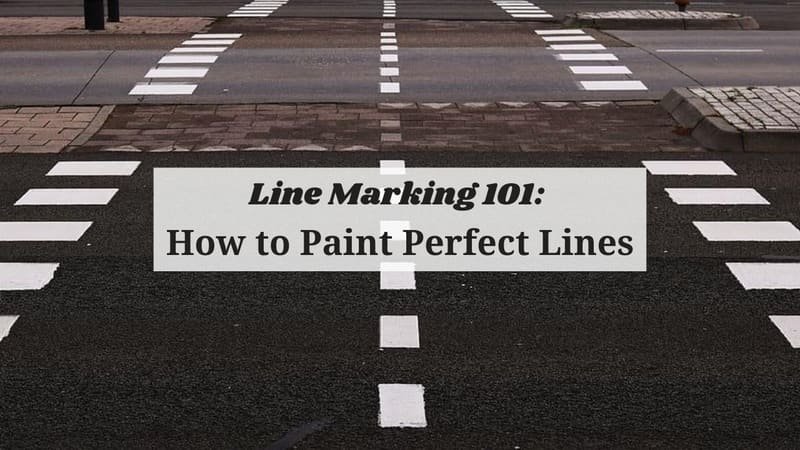Line marking seems like a very simple task to complete, but it isn’t. A small crooked portion or a haphazardly marked line can cause accidents and inconveniences to people. Imagine a crooked line in the driveway, or a pedestrian lane with barely visible lines—that could pose serious hazards to customers and people crossing the street.
Professional line marking promotes safety and order. It ensures things flow systematically, and people follow specific rules and guidelines set in a specific setting or area.
There are specific factors that must be remembered when painting perfectly straight and parallel lines. Marking lines on establishments and public spaces vary depending on the size of the location and the purpose of the lines that will be created.
-
Layout
Pay attention to how wide or narrow that space is. Does it allow enough space to move the equipment, or do you need to make necessary adjustments to ensure you can still fulfil the task with efficiency? Also, what type of space or establishment requires line marking? Is it a supermarket? Or a driveway? Is it a parking lot? Is it a street or a road? By knowing ahead of time where you will be marking the lines, you will know how to gear yourself properly and choose the correct time.
-
Tools
Perfect lines should also be credited to the quality of equipment or tool used to create it. High-quality and efficient equipment delivers optimum results and better control while you mark lines on different surfaces. Old and faulty equipment will only double the work for you.
-
Surface
Will the lines be marked on smooth and flat pavement, or are there ramps or humps that also need marking? Is the surface rough and filled with bumps? Will you be marking lines along a straight path, or are there curves along the way that you also need to follow? A quick survey on the area before starting with the line marking process lets you determine if there are any adjustments that you might need to make with the equipment, technique, or approach that you plan to use in creating the lines.
-
Patience
Nothing good comes from rushing things—especially when marking lines in establishments and public areas. Without patience, you might mark crooked lines or fail to follow through the path or area requiring straight streaks or signs. Work your way slowly, but surely as you form the lines and curves, you must draw. Remember, these lines and signs are not just random symbols that people can ignore. It will serve as a guide to keep customers, drivers, and pedestrians safe at all times.
-
Colour coding
Did you know specific colours or shades also depict a particular message or symbolism in line marking? White lines symbolize work zones, pedestrian lanes, and even short directions for customers or people. Yellow arrows and lines often indicate directions to a certain area, caution, or signal preparation or waiting, especially road intersections. Green lines and signs are often associated in hospital settings, and it can also mean ‘go,’ move, or proceed.
Take note of all the factors listed in this blog the next time you need to work on a project that involves marking lines and signs. Remember, patience merits perfection while a hastily completed job invites multiple repetitions that could have saved you the time and trouble.


